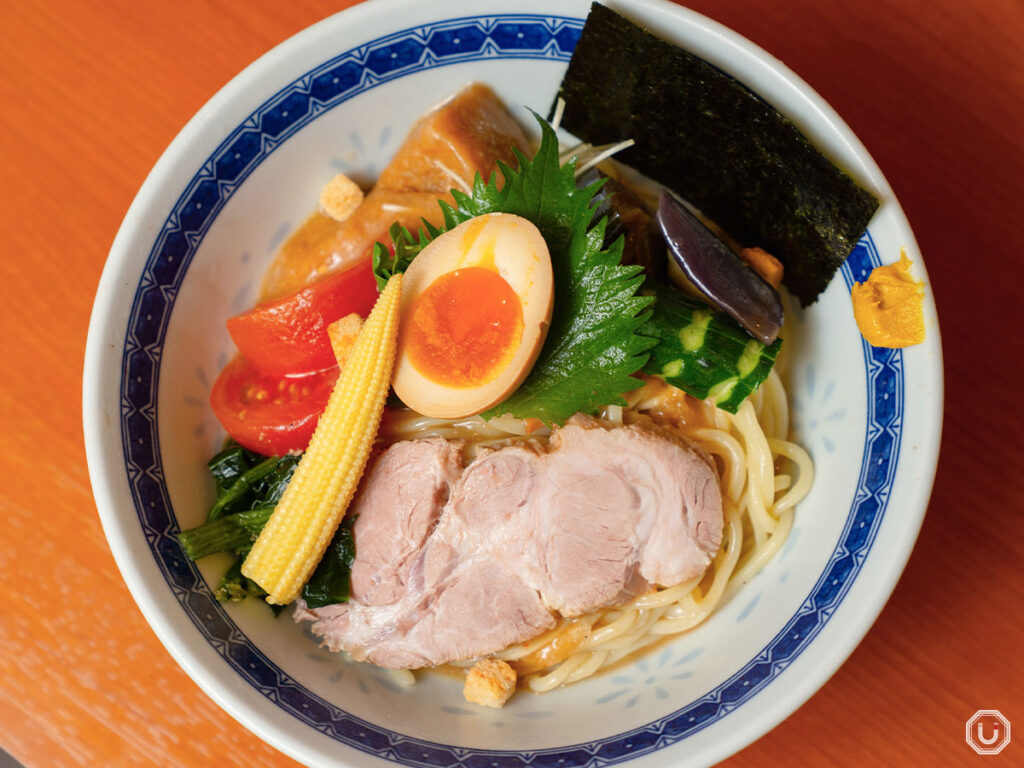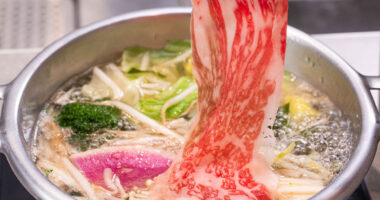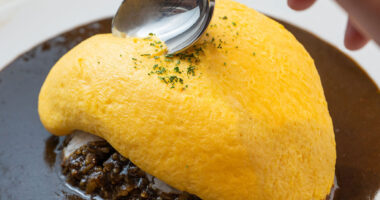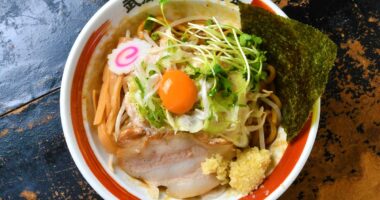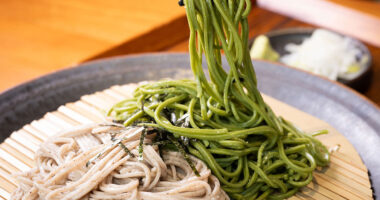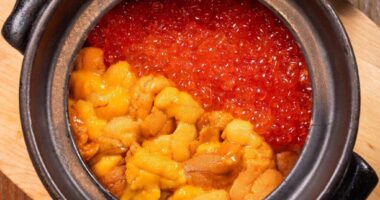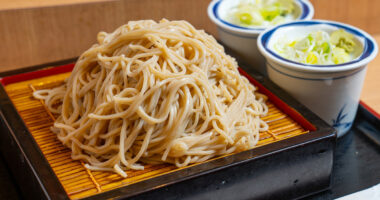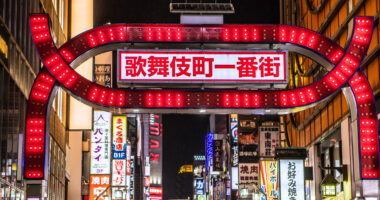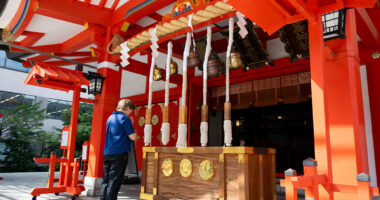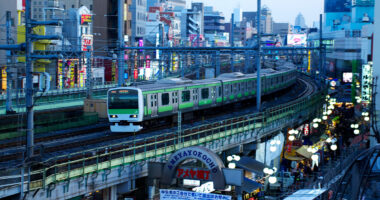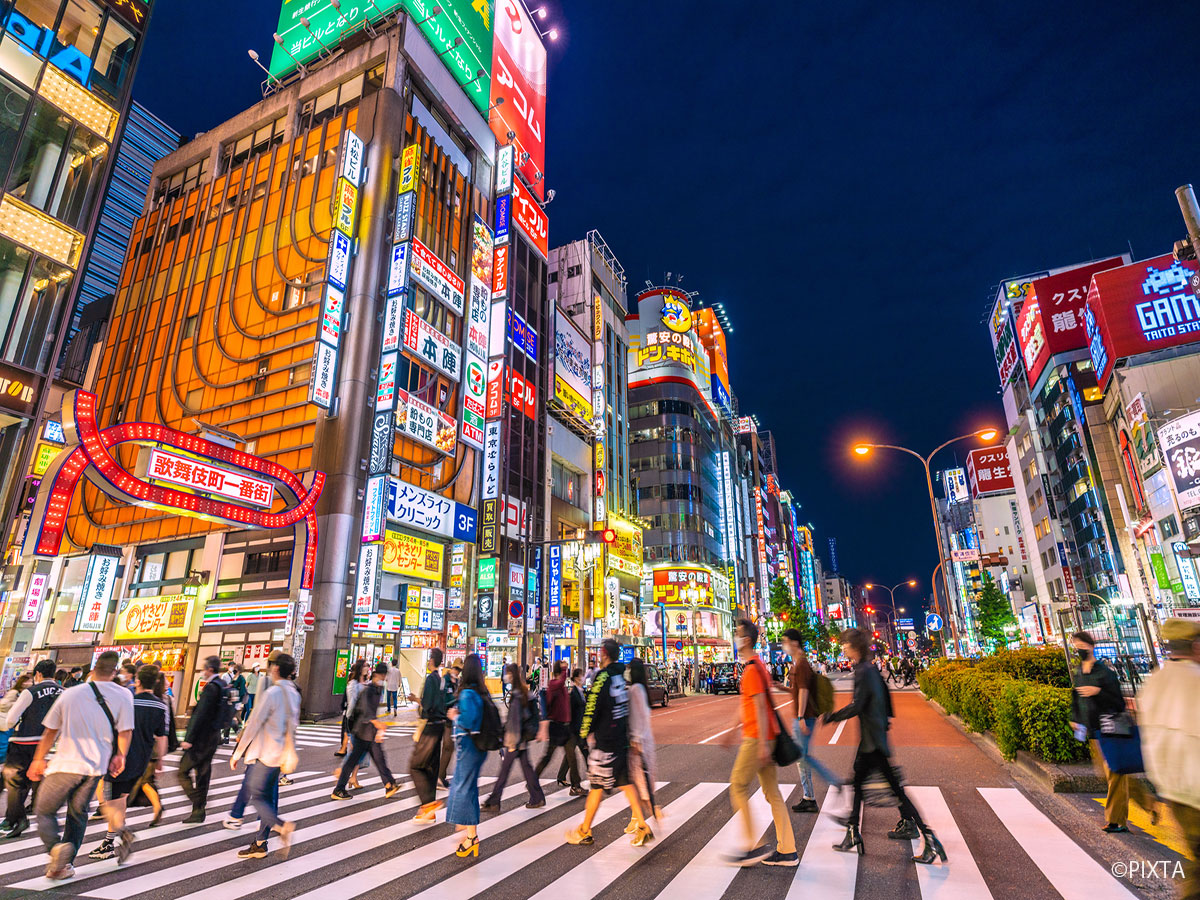Ramen, one of Japan’s most beloved evolving food cultures, has become a national culinary icon.
Walk the streets of Tokyo, and you’ll find quietly tucked-away ramen shops cherished by locals for years.
Just one station from Shinjuku, nestled in a peaceful alley in Yoyogi, “Menkoidokoro Isoji” is a well-known ramen gem among those in the know.
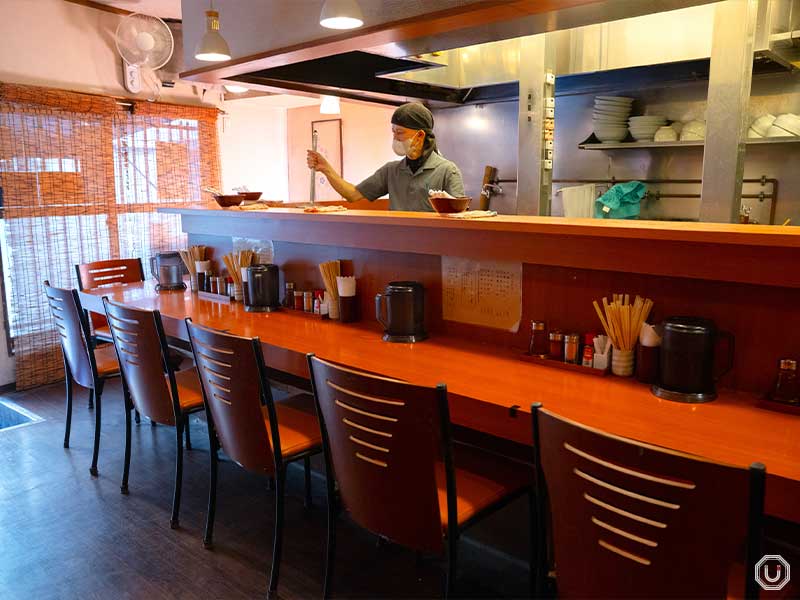
Menkoidokoro Isoji has 10 counter seats only
Yoyogi is conveniently located on the JR Yamanote Line, one stop from Shinjuku and two from Shibuya. It’s also within walking distance of Meiji Jingu, a Shinto shrine and major Tokyo landmark.
Menkoidokoro Isoji attracts a diverse crowd—from longtime local regulars to ramen enthusiasts and even international tourists in recent years.
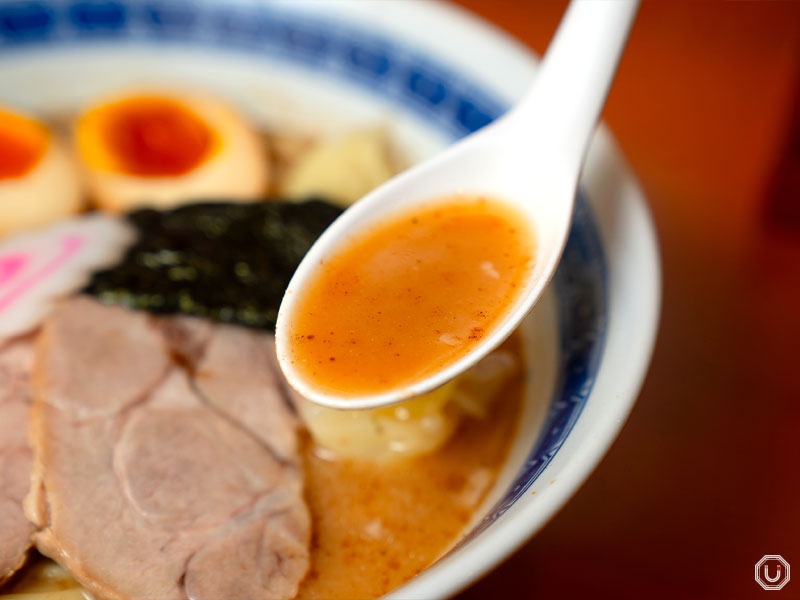
The can’t-quit signature ramen—“Marutoku Chūka Soba”
Menkoidokoro Isoji’s standard menu includes four types: “Chūka Soba” (standard ramen), “Miso Ramen,” “Tsukemen,” (dipping noodles), and “Miso Tsukemen.”
.The most popular dish is the “Marutoku Chuka Soba”—a fully topped ramen. Marutoku means “overall advantage” in Japanese, and the dish is noted on the menu as the kanji toku (得, advantage) within a maru (circle).
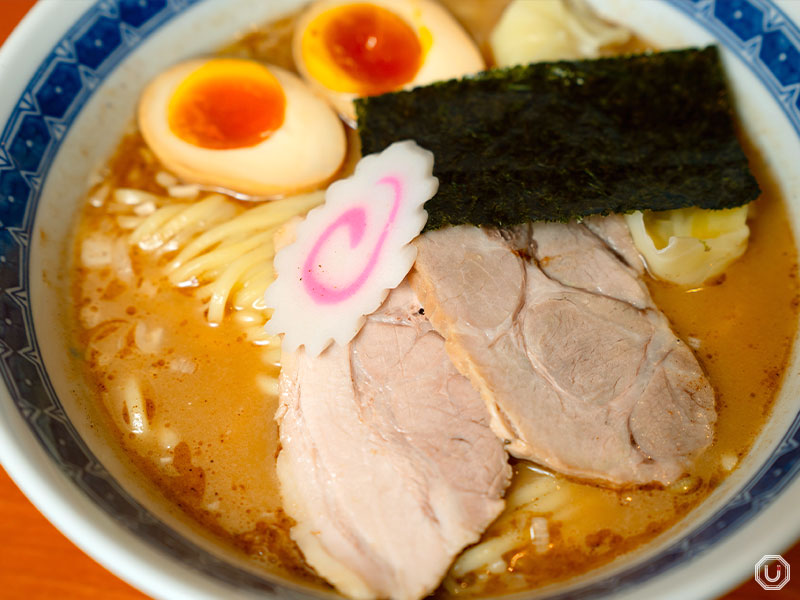
“丸得中華そば,” Marutoku Chuka Soba 1,230 JPY (tax included)
The flavor foundation is a double broth combining stock from chicken, pork, and beef tail with seafood dashi extracted from sardines and sōda-bushi (dried, smoked, and often fermented frigate tuna).
This is blended with two types of soy sauce, sake, and mirin to complete the tare (seasoning sauce).
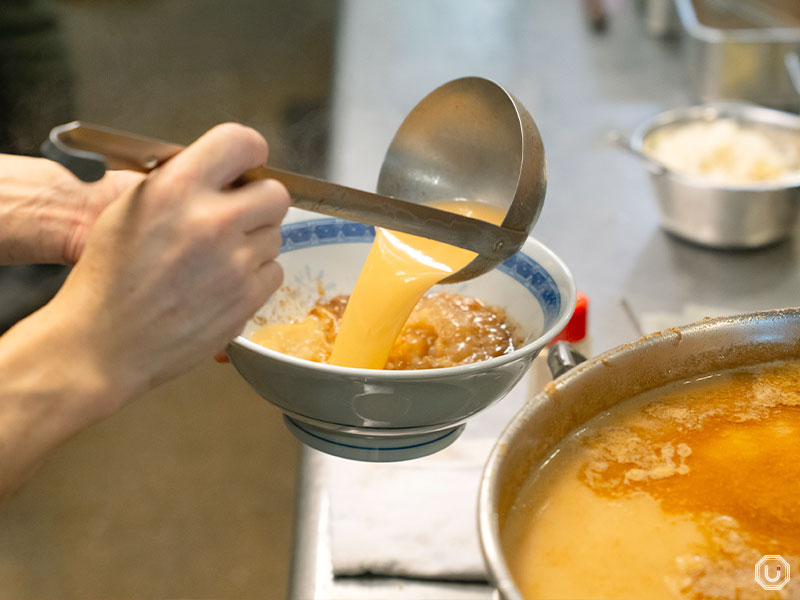
Owner Sotooka says, “Ramen is everyday food. We carefully balance flavors so people can eat it daily without getting tired of it.”
On tasting the house broth, the delicate aroma and rich umami blend harmoniously. The soup never feels heavy, finishing with an incredibly clean aftertaste.
The noodles served are medium-thick and made daily in-house.
The flour blend is unique, combining selected wheat flour with tapioca starch and durum semolina—the same flour used for pasta.
The noodles have a perfect chewiness and a wheat aroma that instantly hooks diners..
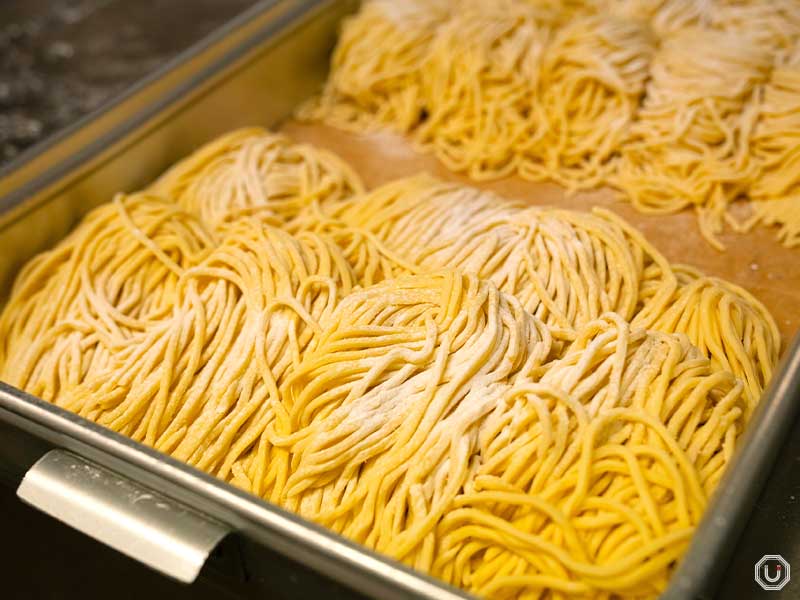
The standard portion of noodles is 200 g (about 7 oz), and you can increase the amount to 300 g (about 10.5 oz) at no extra charge. There’s also a 250 g (about 8.8 oz) option available, which falls between the standard and large portions.
If you’re really hungry, you can upgrade to a large 400 g (about 14 oz) serving for an additional 100 yen (tax included).
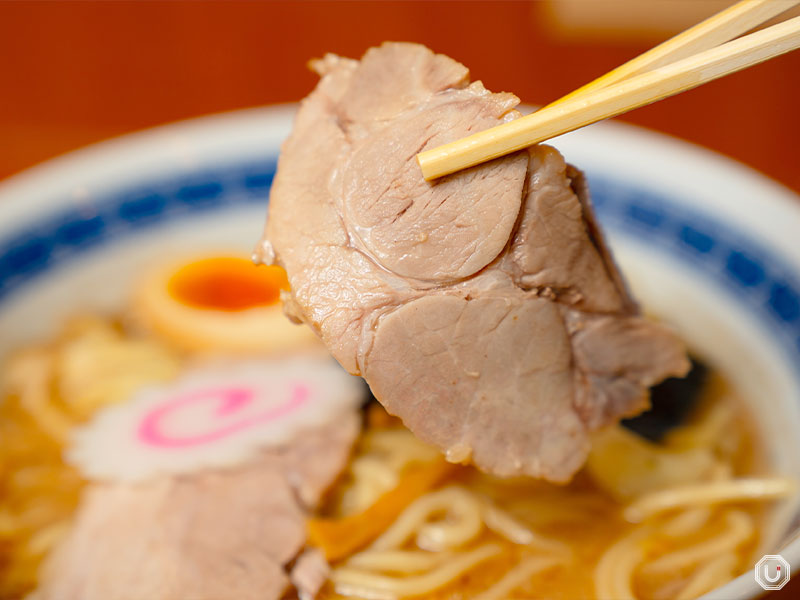
The Marutoku Chuka Soba features two types of chāshū (Japan’s version of char siu) pork—classic pork shoulder and flavorful pork belly—plus a seasoned egg, tender wontons, menma (fermented bamboo shoots), seaweed, and naruto (fish cake).
Yuzu citrus zest adds a fresh aroma, and finely chopped red onions and Belgian shallots hidden at the bottom of the bowl add depth.
Rich and flavorful “Marutoku Miso Tsukemen”
Another must-try is the highly popular “Marutoku Miso Tsukemen,” beloved by repeat customers.
Tsukemen is served with cold noodles and warm dipping broth separately, similar to zaru soba (chilled soba).
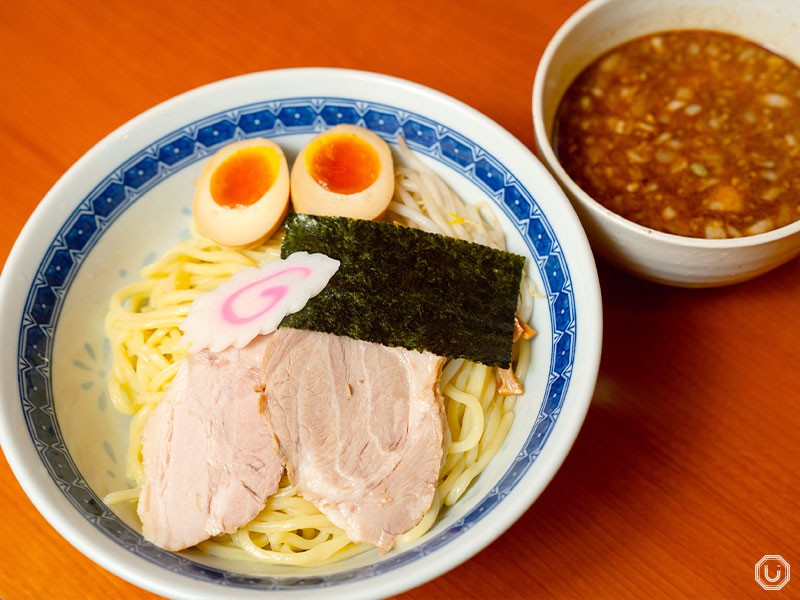
“丸得味噌つけめん,” Marutoku Miso Tsukemen 1,330 JPY (tax included)
The dipping broth uses Hatchō miso, known for its deep richness with mild tartness and bitterness. It’s layered with animal and seafood dashi, creating a complex, full-bodied flavor.
Dipping the chewy noodles into the rich broth delivers a nutty aroma, deep umami, and lingering savoriness that will leave a smile on your face.
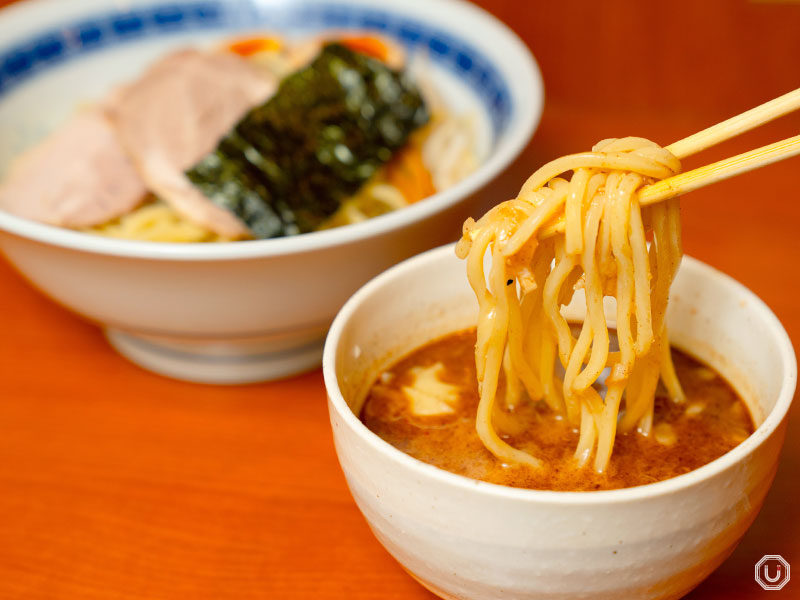
The toppings mirror those of the Marutoku Chuka Soba.
Condiments available at the table help customize your taste—use ichimi chili powder for spice or vinegar to add freshness.
Because tsukemen broth is designed for dipping, it’s thicker and more concentrated than regular ramen broth to coat the noodles fully even with a quick dip.
For those who want to enjoy the broth after finishing the noodles, ask for sūpu wari, which means adding broth to a concentrated soup or sauce.
Menkoidokoro Isoji will add their regular ramen broth to dilute the tsukemen dipping sauce, softening the richness and allowing you to savor every last drop.
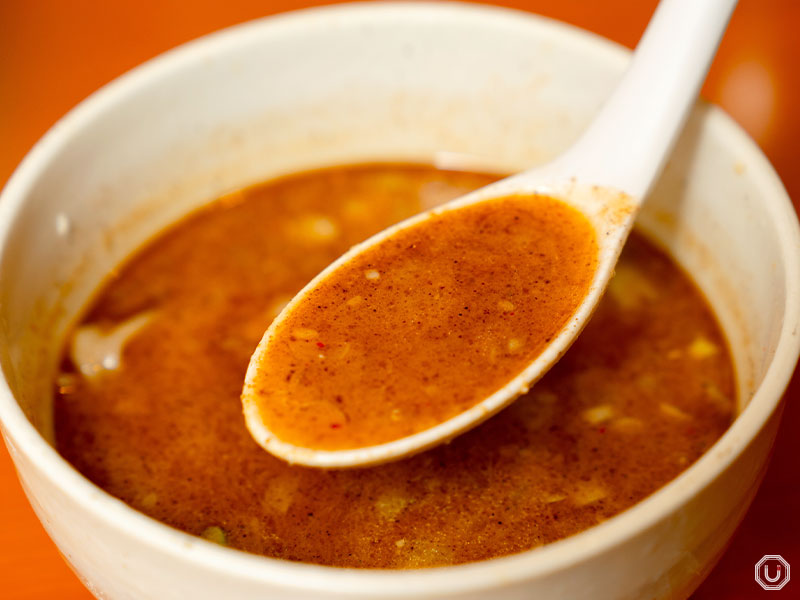
Dipping sauce from the Marutoku Miso Tsukemen after diluting it through sūpu wari
Summer special: creative and luxurious chilled ramen
In Japan, eating cold noodle dishes like hiyashi chūka (chilled Chinese noodles) is a popular summer tradition.
Ramen and Chinese restaurants often serve this seasonal classic, making it a hallmark of Japanese summer dining.
At home, hiyashi chuka typically consists of boiled noodles cooled in water, topped with a colorful arrangement of cucumber slices, chashu pork, egg, and tomato, all served with a soy or sesame-flavored dressing.
But Menkoidokoro Isoji’s hiyashi chuka is an elevated take on the classic.
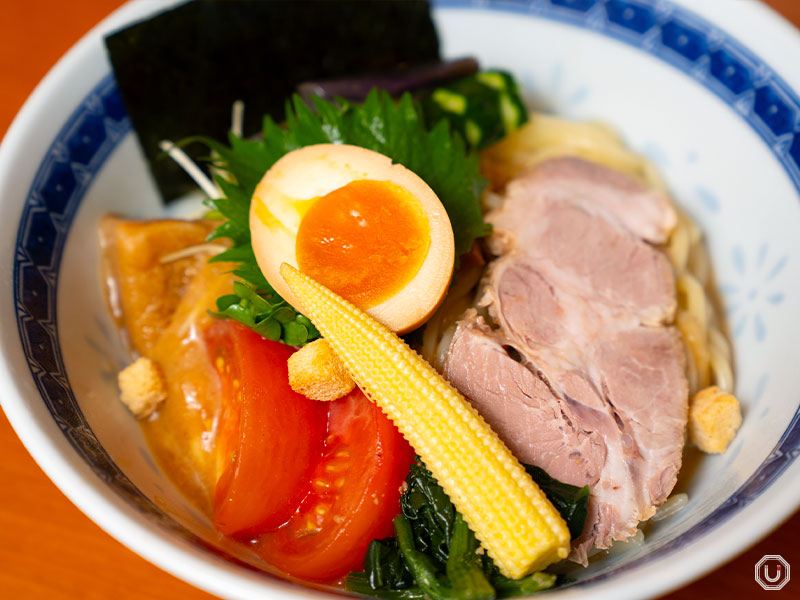
“冷やし中華,” Hiyashi Chuka 1,300 JPY (tax included)
The bowl is adorned with a variety of toppings and summer vegetables including chashu, baby corn, seasoned egg, tomato, cucumber, eggplant, shiso leaves, seaweed, and radish sprouts.
The broth base differs too—rather than a soy sauce or sesame base, it features a tangy seafood and tonkotsu (pork bone) broth.
The usual ramen broth is turned into a jelly-like gelée and generously poured over the noodles, which have been thoroughly cooled in ice water.
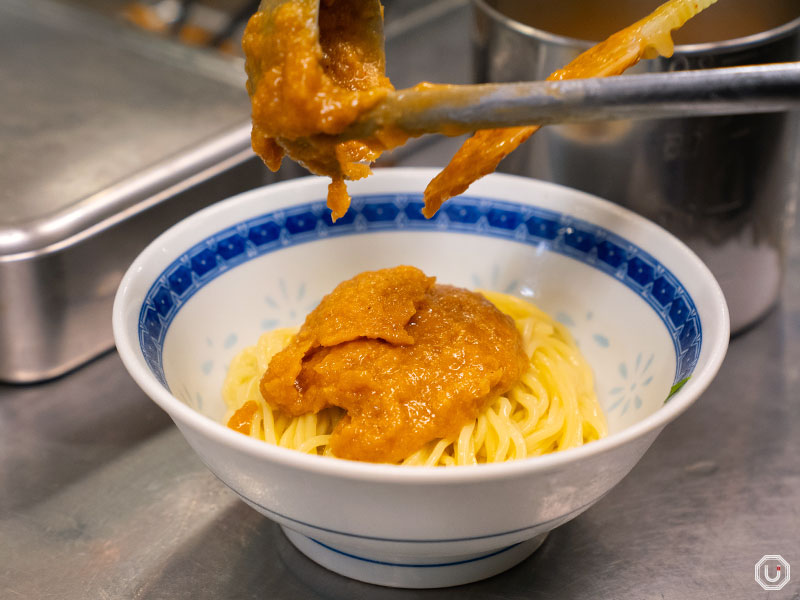
To keep the dish cold as you eat, ice cubes made from broth are served alongside.
Even the bowl is chilled in the freezer until just before serving to ensure the dish stays refreshingly cold throughout the meal.
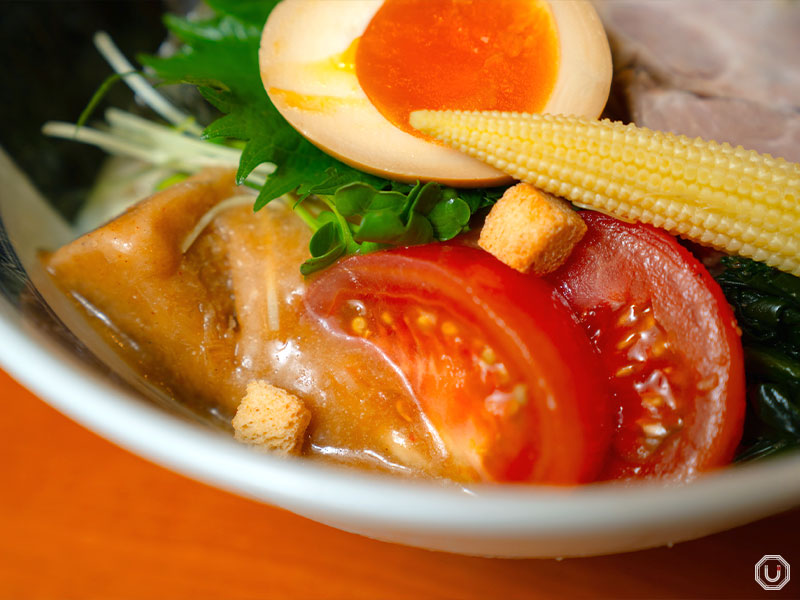
The ice-like dashi melts during the meal, enriching the broth
Mix the dish well before eating to enjoy the full range of colors, textures, and flavors—a uniquely satisfying experience.
More than half the customers order this in summer, which runs roughly from mid-June to late September, so don’t miss out!
On the rim, you’ll find a dollop of karashi. Unlike Western mustard, this condiment lacks sourness but is very spicy, so start with a small amount and adjust carefully.
Be sure to enjoy this beloved ramen gem during your trip to Japan!

Information
| Store name | 麺恋処 いそじ Menkoidokoro Isoji |
|---|---|
| Address | 1-14-5 Yoyogi, Shibuya-ku, Tokyo
|
| Access |
Yoyogi Station 3-minute walk from Exit A1
Yoyogi Station 4-minute walk from Yoyogi Station West Exit
Minami-Shinjuku Station 4-minute walk from Minami-Shinjuku Station
|
| Phone number | 03-3378-6555 |
| Reservations | Not accepted |
| Payment |
|
| Service charge/Table charge | None |
| Hours | Mon-Fri. 11:30-20:30 Sat. 11:30-19:00 |
| Closed | Sunday & nat’l holidays |
| Seating | 9 counter seats |
| Smoking | All seats are non-smoking |
| Official website | None |
| Other information |
|
※Menu contents, prices, store information, etc. are current as of August 2025.
